Psychedelic Rock's Mind-Expanding Soundscapes
Psychedelic rock, as the name suggests, delves into the psychedelic experience. It's a genre of music that aims to replicate or induce altered states of consciousness, often associated with the use of psychedelic drugs such as LSD.
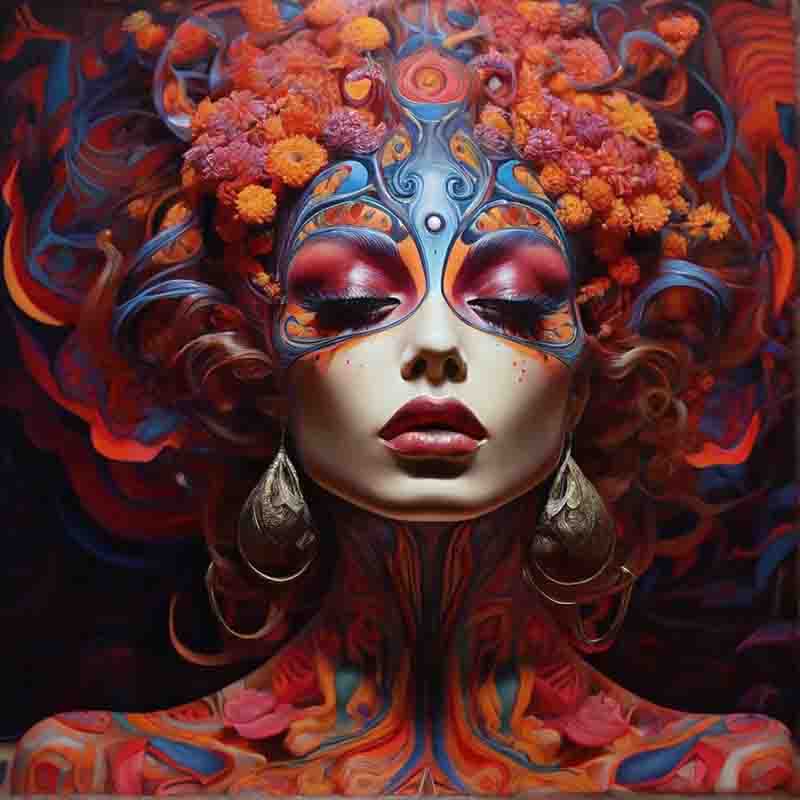
Psychedelic Rock's impact on modern music has been profound, with its experimental spirit, sonic exploration, and mind-expanding themes leaving a lasting imprint on various genres and musical styles.
Psychedelic rock is a genre of music that emerged in the 1960s, during a time of immense social and cultural upheaval, gaining prominence as a key element of the countercultural movement.
It's defined by its exploration of mind-expanding sounds, often characterized by trippy effects, intricate melodies, and experimental instrumentation.
Psychedelic Rock {Cosmic Howl 2024}
"Cosmic Howl" is a sonic journey through the farthest reaches of the cosmos, a testament to Likewolf's ability to bend and warp perception with his music.
✅ Subscribe and become a channel member:
Artists in this musical genre sought to break away from the constraints of traditional guitar based rock music, embracing a more free-form approach that allowed for sonic exploration and improvisation.
One of the defining features of psychedelic rock is its use of unconventional sounds and recording techniques to create immersive auditory experiences.
From swirling guitars to echo-laden vocals and imaginative synthesiser sounds, psychedelic rock transports listeners to otherworldly realms, inviting them to lose themselves in the music.
Psychedelic Rock is a genre of music characterized by its exploration of unconventional sounds, experimental song structures, and a trippy, mind-altering atmosphere.
12 important facts to know about Psychedelic Rock
-
Emergence: Psychedelic rock originated in the mid-1960s as a subgenre of rock music, primarily in the United States and the United Kingdom.
-
Influences: The genre was heavily influenced by the psychedelic experiences induced by mind-altering substances like LSD, as well as by Eastern mysticism, avant-garde art, and the broader countercultural movement of the 1960s.
-
Musical Characteristics: Psychedelic rock is characterized by its experimental approach to music, often featuring unconventional song structures, extended instrumental passages, and innovative use of studio effects.
-
Instrumentation: Typical instruments used in psychedelic rock include electric guitars, bass, drums, keyboards (such as organs and synthesizers), and occasionally non-traditional instruments like sitars and theremins.
-
Key Figures: Some of the most influential psychedelic rock artists include The Beatles, Pink Floyd, The Jimi Hendrix Experience, The Doors, Jefferson Airplane, and Cream.
-
Sonic Exploration: Psychedelic rock explores themes related to altered states of consciousness, surrealism, mysticism, and existentialism, both musically and lyrically.
-
Peak Popularity: The genre reached its peak popularity in the late 1960s with landmark albums such as The Beatles' "Sgt. Pepper's Lonely Hearts Club Band" and Pink Floyd's "The Piper at the Gates of Dawn."
-
Cultural Impact: Psychedelic rock played a significant role in shaping the cultural and social landscape of the 1960s, influencing fashion, art, film, and the broader countercultural movement.
-
Decline and Resurgence: By the early 1970s, the popularity of psychedelic rock waned as musical trends shifted. However, the genre experienced a resurgence in the late 20th and early 21st centuries, with modern bands incorporating psychedelic elements into their music.
-
Legacy: Despite its relatively short-lived initial popularity, psychedelic rock left a lasting legacy on popular music, influencing subsequent genres such as progressive rock, shoegaze, and neo-psychedelia.
-
Albums: Some iconic psychedelic rock albums include "The Doors" by The Doors, "Are You Experienced" by The Jimi Hendrix Experience, "Sgt. Pepper's Lonely Hearts Club Band" by The Beatles, "Forever Changes" by Love, and "Dark Side of the Moon" by Pink Floyd.
-
Continued Exploration: Psychedelic rock continues to evolve and inspire new generations of musicians and listeners, with contemporary bands exploring its sonic possibilities and pushing its boundaries in the digital age.
Psychedelic Rock bands weren't content to simply play the hits, they wanted to take listeners on a journey, to explore the outer reaches of consciousness and sonic possibility.
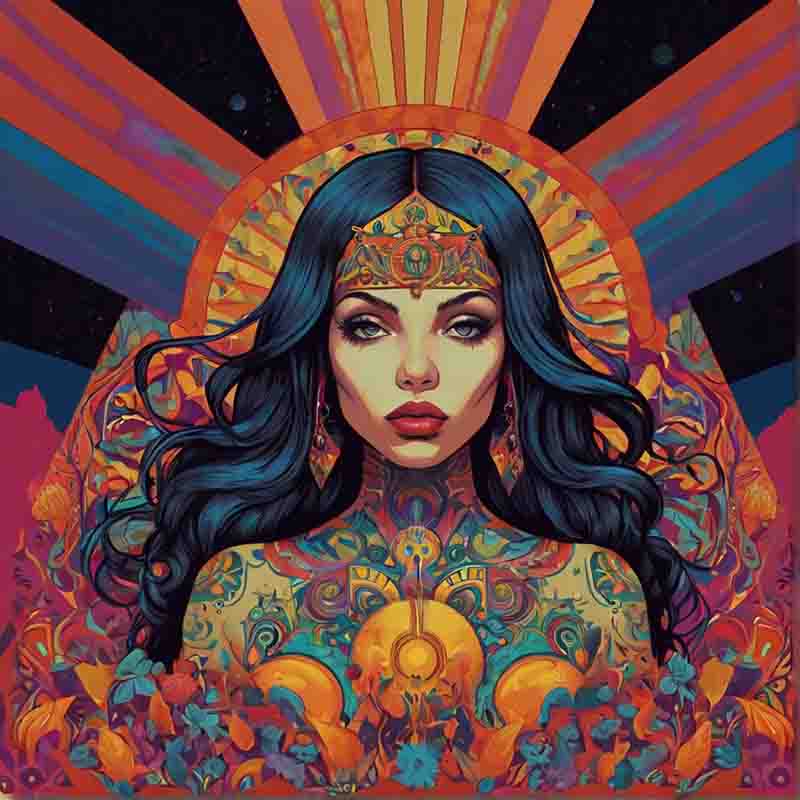
Psychedelic Rock's impact on modern music has been profound, with its experimental spirit, sonic exploration, and mind-expanding themes leaving a lasting imprint on various genres and musical styles.
Psychedelic Rock: Timeline
Psychedelic Rock emerged in the mid-1960s as a sonic and cultural revolution, characterized by its experimentation with mind-altering sounds, surreal lyrics, and a rejection of conventional song structures.
While its mainstream popularity waned in the 1970s, psychedelic rock continued to influence subsequent generations of musicians.
Today, psychedelic rock remains a vibrant and influential genre, continually evolving and inspiring new generations of artists.
| Year | Milestone |
|---|---|
| 1965 | The Beatles release "Rubber Soul," often considered one of the first psychedelic rock albums. |
| 1966 | The Yardbirds' "Shapes of Things" and The Byrds' "Eight Miles High" are released, further popularizing psychedelic rock. |
| 1967 | The "Summer of Love" in San Francisco brings widespread attention to psychedelic rock with bands like Jefferson Airplane and The Grateful Dead. The Beatles release "Sgt. Pepper's Lonely Hearts Club Band." |
| 1968 | Pink Floyd releases "A Saucerful of Secrets," expanding the boundaries of psychedelic rock. The genre becomes more experimental and diverse. |
| 1969 | Woodstock Festival showcases some of the biggest psychedelic rock acts of the time, including Jimi Hendrix and The Grateful Dead. |
| 1970s | Psychedelic rock starts to decline in mainstream popularity but continues to influence other genres such as progressive rock and heavy metal. |
| 1980s | A revival of psychedelic rock occurs with bands like The Stone Roses and Primal Scream blending the genre with dance and indie rock elements. |
| 1990s | The popularity of neo-psychedelia rises with bands like The Flaming Lips and The Brian Jonestown Massacre. |
| 2000s | Psychedelic rock experiences a resurgence with bands like Tame Impala and Animal Collective gaining mainstream attention. |
| 2010s | The genre continues to evolve with acts like King Gizzard & The Lizard Wizard incorporating elements of garage rock and microtonal music. |
| Present | Psychedelic rock remains a diverse and influential genre, with artists continuing to push its boundaries and explore new sonic territories. |
This timeline provides a snapshot of key events and developments in the history of psychedelic rock, from its inception in the 1960s to its ongoing evolution in the present day
Discover the Psychedelic Side of Rock
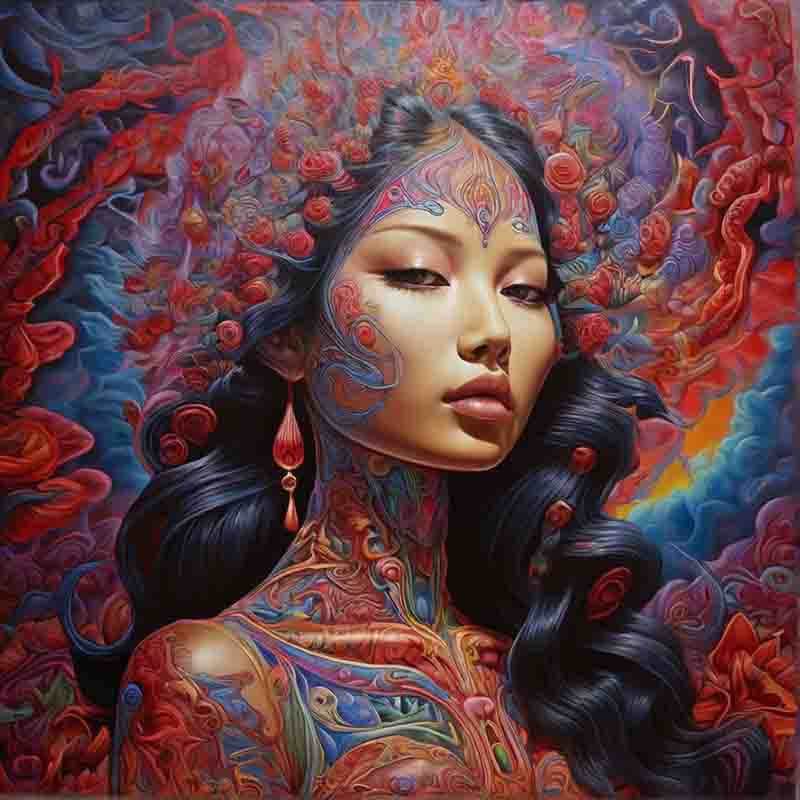
Psychedelic Rock was the soundtrack to a generation that was questioning authority, challenging the status quo, and seeking to create a better world.
Originating from the countercultural movements of the 1960s, Psychedelic Rock was a product of the era's spirit of rebellion and a quest for personal and collective transformation.
Musicians and listeners alike sought to break free from the confines of mainstream society, embarking on a mind-expanding journey fueled by experimentation, creativity, and the liberating power of music.
As the world grappled with civil rights struggles, the Vietnam War, and a rapidly changing cultural landscape, Psychedelic Rock became the soundtrack for a generation searching for deeper meaning and connection.
The genre's embrace of psychedelic drugs, like LSD, became emblematic of its desire to push the boundaries of consciousness and explore altered states of reality.
At its core, Psychedelic Rock was about more than just music; it was a multisensory experience.
Artists incorporated mind-bending visuals, vivid album artwork, and mesmerizing light shows into their performances, creating immersive environments that transported audiences to new realms of perception.
The movement was not confined to a specific sound or formula; instead, it encompassed a diverse range of musical expressions.
Bands blended elements of rock, folk, blues, and Eastern music, experimenting with instrumentation and pushing the limits of traditional song structures.
Improvisation played a central role, allowing musicians to transcend the boundaries of composition and dive into uncharted sonic territory.
The Birth of Psychedelic Rock
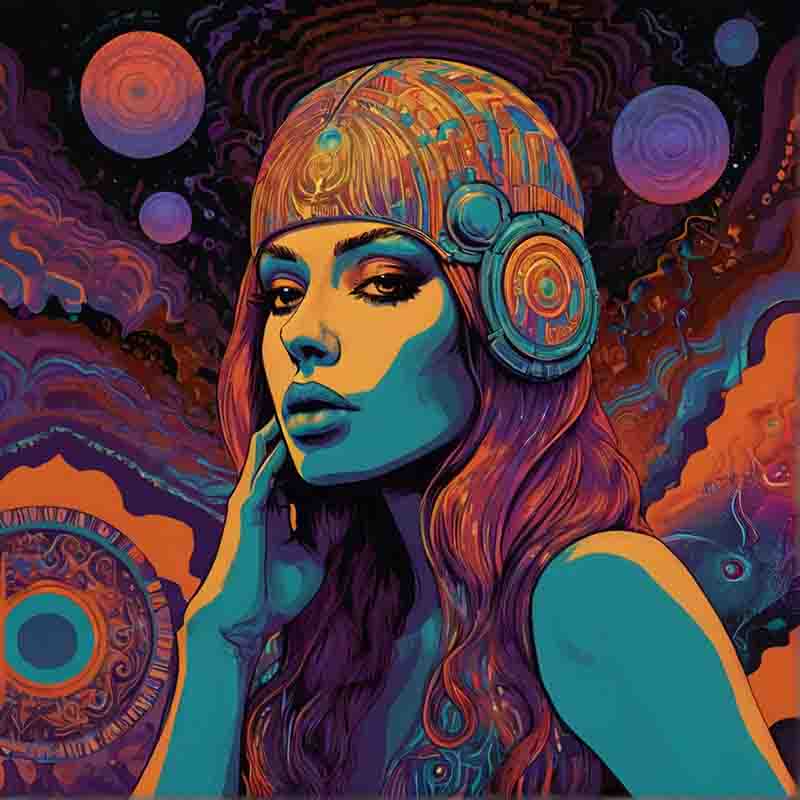
From the swirling, otherworldly sounds of the electric guitar to the hypnotic rhythms of the tabla and sitar, Psychedelic Rock bands were unafraid to incorporate unconventional instruments and techniques into their music.
The genesis of Psychedelic Rock can be traced back to the cultural and social upheaval of the 1960s, a decade marked by profound shifts in societal norms and values.
As traditional structures were challenged, a new wave of musicians sought to break free from the constraints of mainstream music and experiment with fresh sounds and ideas.
During this period, a handful of visionary bands emerged as pioneers of the Psychedelic Rock movement.
One of the earliest bands to explore psychedelic elements were The Byrds with their 1966 hit "Eight Miles High."
By incorporating jangling guitars, complex harmonies, and enigmatic lyrics, they laid the groundwork for what was to come.
The Beatles were instrumental in popularizing Psychedelic Rock with their groundbreaking album "Revolver" in 1966, which featured innovative production techniques and mind-expanding themes.
This paved the way for their magnum opus, "Sgt. Pepper's Lonely Hearts Club Band" in 1967, often regarded as one of the most influential Psychedelic Rock albums of all time.
Other influential bands of the era included Jefferson Airplane, whose album "Surrealistic Pillow" captivated audiences with its fusion of folk and rock, and The Rolling Stones, who explored psychedelic sounds in songs like "Paint It Black" and "Ruby Tuesday."
Elements of folk, blues, and Eastern music
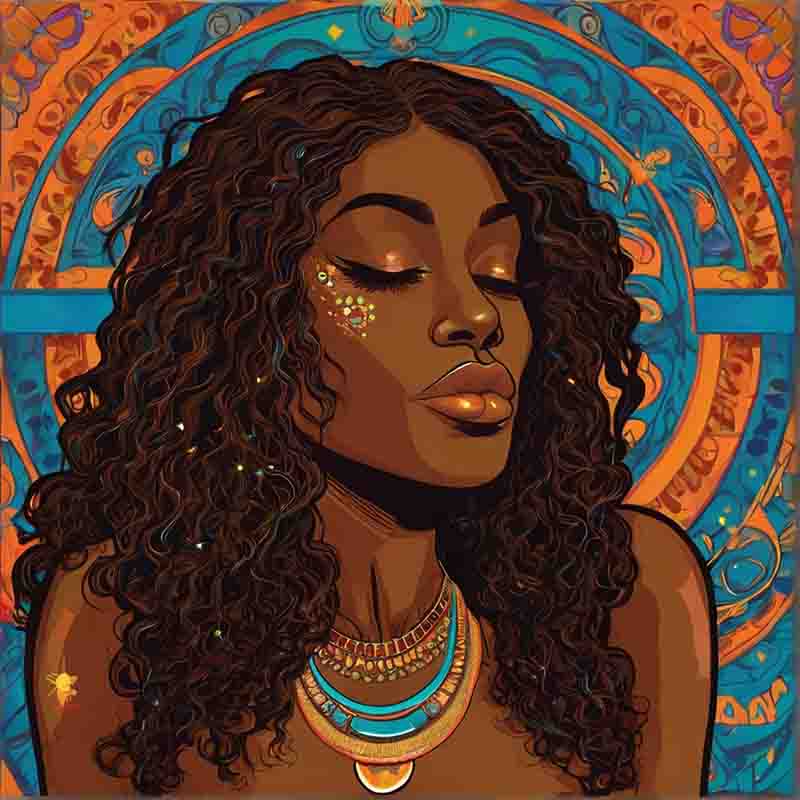
Psychedelic Rock explored themes of spirituality, existentialism, and the human condition.
Psychedelic Rock was not confined to a single musical formula; instead, it embraced a wide array of influences.
Many bands drew inspiration from traditional folk and blues music, infusing these elements with the electric energy of rock and roll.
This amalgamation of styles created a captivating and often mind-altering sonic experience.
Psychedelic Rock artists looked eastward for inspiration, incorporating elements of Indian classical music and raga scales.
This infusion of Eastern influences added an otherworldly and transcendental dimension to their music, further enhancing the genre's psychedelic nature.
As the movement gained momentum, cities like San Francisco and London became epicenters for Psychedelic Rock, nurturing a vibrant and experimental music scene.
Underground clubs and music festivals provided platforms for these bands to showcase their boundary-pushing creations, connecting them with like-minded audiences hungry for new perspectives and auditory adventures.
The birth of Psychedelic Rock was a convergence of cultural shifts, musical experimentation, and a quest for consciousness expansion.
Early pioneers, drawing from various musical traditions, laid the foundation for an era of music that continues to inspire and influence artists to this day.
Psychedelic Rock remains a testament to the power of music as a vehicle for self-expression, artistic exploration, and a reflection of the ever-evolving human experience.
The role of drugs in Psychedelic Rock

Many Psychedelic Rock albums are considered classics of the genre, including "Sgt. Pepper's Lonely Hearts Club Band" by The Beatles, "The Dark Side of the Moon" by Pink Floyd, and "Are You Experienced" by The Jimi Hendrix Experience.
One of the defining aspects of Psychedelic Rock is its intimate connection with psychedelic drugs, particularly LSD (lysergic acid diethylamide).
During the 1960s, the use of psychedelic substances became an integral part of the counterculture movement, influencing various forms of artistic expression, including music.
Psychedelic Rock musicians, along with their audiences, experimented with mind-altering substances as a means of expanding consciousness and exploring the depths of the human mind.
These drugs were believed to open the doors of perception, giving users access to heightened sensory experiences, vivid imagery, and altered states of consciousness.
The profound impact of these substances on artists' perceptions often found expression in their music, resulting in lyrics and soundscapes that mirrored the trippy and hallucinatory nature of the psychedelic experience.
The Summer of Love and the counterculture movement
Psychedelic Rock became an emblem of the counterculture movement, which sought to challenge mainstream norms and advocate for peace, love, and personal liberation.
The "Summer of Love" in 1967, particularly centered in San Francisco's Haight-Ashbury district, was a pivotal moment for the Psychedelic Rock movement, where thousands of young people gathered in pursuit of an alternative way of living, free from societal constraints.
During this era, Psychedelic Rock served as a unifying force, bringing together individuals from diverse backgrounds who shared a desire for social change and spiritual exploration.
The music acted as a sonic conduit, encouraging listeners to question authority, embrace individuality, and promote ideals of love and harmony.
Spirituality and consciousness through music
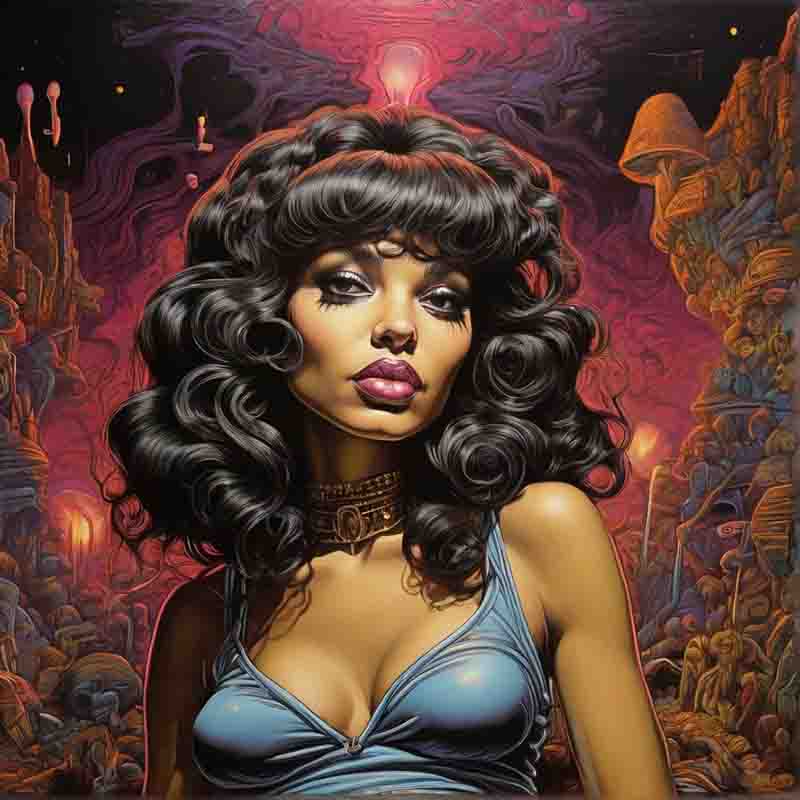
Many Psychedelic Rock albums are considered classics of the genre, including "Sgt. Pepper's Lonely Hearts Club Band" by The Beatles, "The Dark Side of the Moon" by Pink Floyd, and "Are You Experienced" by The Jimi Hendrix Experience.
Psychedelic Rock was not solely about mind-altering substances or vibrant visuals; it was a profound spiritual journey through music.
Artists used their music to tap into higher realms of consciousness and explore existential questions about life, existence, and the nature of reality.
The lyrics often delved into philosophical and mystical themes, encouraging listeners to embark on their own inward quests for understanding and self-discovery.
The music itself was a sonic representation of the psychedelic experience, with its extended instrumental passages, swirling soundscapes, and experimental techniques.
Musicians used innovative recording methods and studio effects to create otherworldly and immersive sonic environments, replicating the surreal sensations often associated with psychedelic drugs.
Psychedelic Experience was a transformative and holistic journey that encompassed not just the music itself but the broader countercultural movement and the exploration of consciousness.
Psychedelic Rock's intimate association with psychedelic substances and its embrace of spirituality allowed it to transcend traditional boundaries and connect deeply with its audience.
The genre's legacy endures as a powerful reminder of the boundless potential of music to inspire introspection, foster unity, and challenge the prevailing paradigms of society.
Mind-expanding lyrics and themes
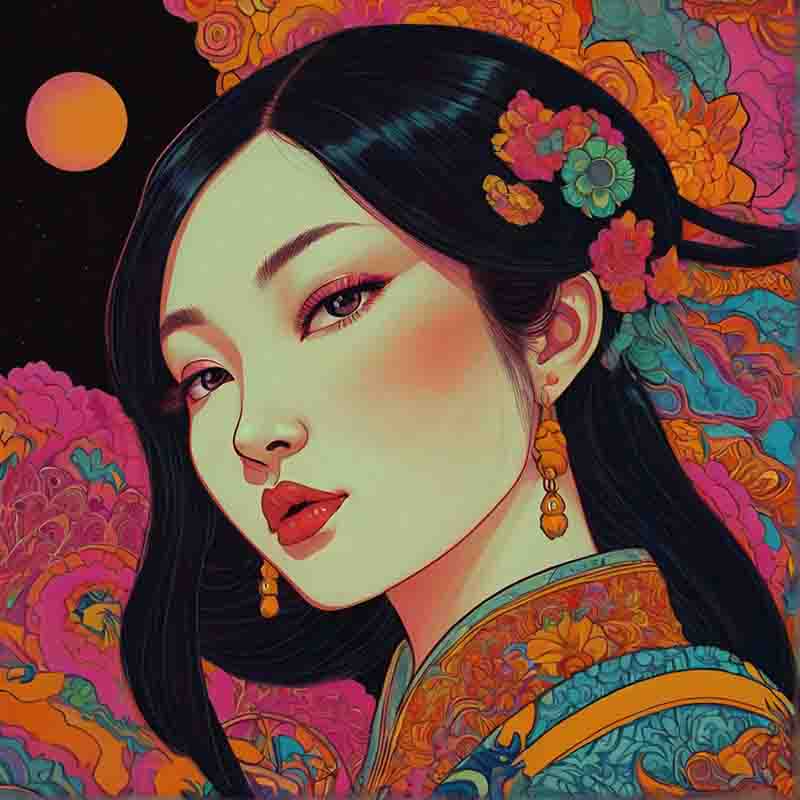
A Psychedelic Rock revival occurred in the 1980s, blending the genre with indie and dance music elements, and it experienced further resurgences in the 1990s and 2000s.
At the heart of Psychedelic Rock lies a fascination with the exploration of altered states of consciousness and the human psyche.
This is reflected in the genre's lyrical themes, which often delve into surreal, mystical, and philosophical subjects. Lyrics frequently touch on themes of spirituality, existentialism, love, peace, and the interconnectedness of all things.
Symbolism, metaphor, and vivid imagery are commonly used to evoke dreamlike and surreal experiences, inviting listeners to embark on a voyage of introspection and self-discovery.
Instrumentation and improvisation
Psychedelic Rock musicians embraced a wide array of instruments, seeking to create rich and immersive soundscapes.
The traditional rock band setup of guitars, bass, drums, and vocals was often augmented with additional instruments such as keyboards, sitars, tamburas, flutes, and violins.
These diverse instruments contributed to the genre's distinct and eclectic sound.
Improvisation played a significant role in Psychedelic Rock performances.
Extended instrumental sections allowed musicians to explore new musical territories spontaneously, giving rise to intricate jams and experimental soundscapes during live shows.
This element of improvisation enhanced the interactive and communal nature of Psychedelic Rock concerts, fostering a deep connection between performers and audiences.
Fusion of traditional and unconventional instruments
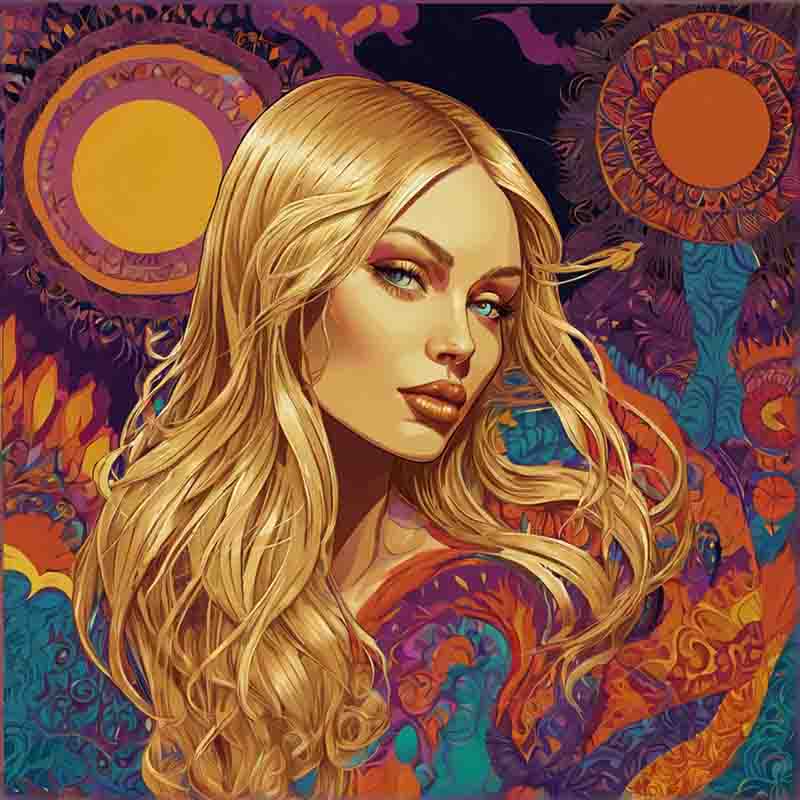
Psychedelic Rock artists and fans were outspoken critics of the Vietnam War and other military conflicts of the era.
A defining aspect of Psychedelic Rock is its fusion of traditional and unconventional instruments from various cultural and musical traditions.
Inspired by the global countercultural movement, bands integrated elements of Indian classical music, folk, blues, jazz, and Eastern musical scales into their compositions.
The incorporation of sitars, tabla, and other non-Western instruments added an exotic and mesmerizing quality to the music, further enhancing its psychedelic allure.
Sonic experimentation and studio effects
The studio became a playground for Psychedelic Rock musicians, enabling them to experiment with innovative recording techniques and studio effects.
Artists manipulated tape loops, reverbs, delays, and feedback to create trippy and mind-bending sounds.
The use of echo, phasing, and flanging effects contributed to the genre's surreal and otherworldly sonic landscape.
Concept albums and thematic storytelling
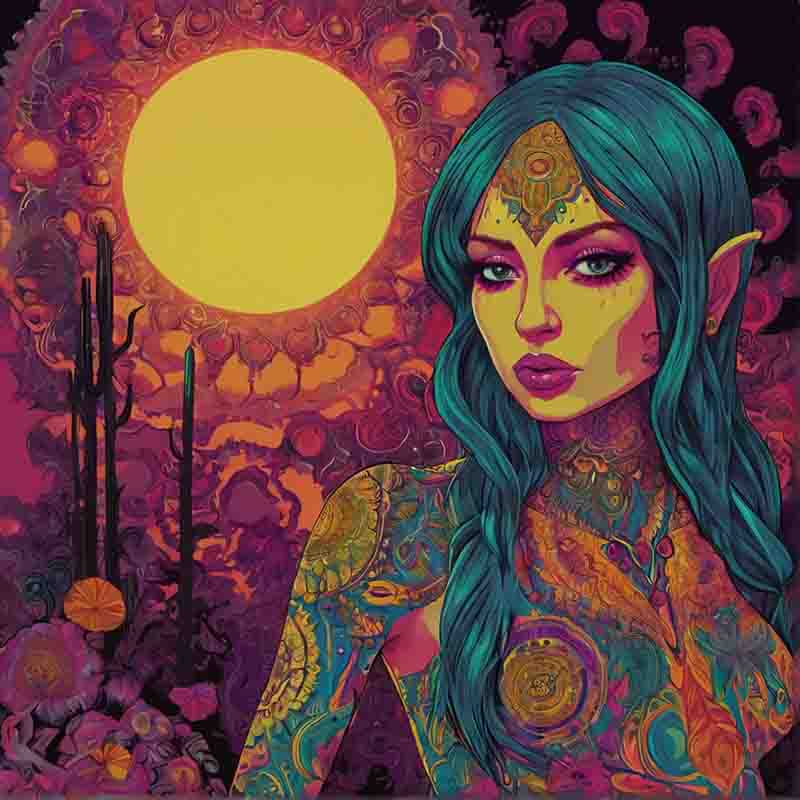
Concept albums in Psychedelic Rock feature thematic narratives that explore a central idea, story, or theme throughout the album
Many Psychedelic Rock bands released concept albums, where the songs were interconnected by a central theme or narrative.
These albums often had a coherent flow, providing listeners with an immersive experience akin to a musical journey.
The concept album format allowed artists to weave together diverse musical and lyrical elements, enabling them to explore complex themes in a holistic and artistic manner.
Iconic Psychedelic Rock Bands and Albums:
Psychedelic Rock produced a plethora of influential bands and albums that have left an indelible mark on the music world. Here are some of the most iconic bands and albums that shaped and defined the genre.
-
The Beatles - "Sgt. Pepper's Lonely Hearts Club Band" (1967): Often considered a masterpiece of Psychedelic Rock, The Beatles' "Sgt. Pepper's Lonely Hearts Club Band" album broke new ground with its innovative use of studio effects, experimental song structures, and surreal lyrics. Tracks like "Lucy in the Sky with Diamonds" and "A Day in the Life" exemplify the album's psychedelic themes and musical brilliance, making it a landmark release in music history.
-
Pink Floyd - "The Dark Side of the Moon" (1973): Pink Floyd's magnum opus, "The Dark Side of the Moon," is an iconic concept album that delves into themes of time, mental health, and human existence. The album's ethereal soundscapes, immersive production, and thought-provoking lyrics captivated audiences worldwide, solidifying Pink Floyd's place as one of the most influential Psychedelic Rock bands of all time.
-
Jefferson Airplane - "Surrealistic Pillow" (1967): A pivotal album in the San Francisco Psychedelic Rock scene, "Surrealistic Pillow" by Jefferson Airplane introduced audiences to the band's distinctive blend of folk, rock, and psychedelic elements. Tracks like "White Rabbit" and "Somebody to Love" became anthems of the counterculture movement, embodying the spirit of the 1960s and the quest for individual and societal change.
-
The Jimi Hendrix Experience - "Are You Experienced" (1967): Jimi Hendrix's debut album, "Are You Experienced," showcased his revolutionary guitar work and innovative use of effects, redefining the possibilities of electric guitar in Psychedelic Rock. Songs like "Purple Haze" and "Hey Joe" not only defined the genre but also cemented Hendrix's status as one of the greatest guitarists in music history.
-
The Doors - "The Doors" (1967): The self-titled debut album of The Doors introduced the world to Jim Morrison's enigmatic persona and the band's dark, poetic, and psychedelic sound. With tracks like "Light My Fire" and "Break On Through (To the Other Side)," the album's mystical atmosphere and Morrison's haunting vocals became synonymous with the essence of Psychedelic Rock
-
Grateful Dead - "Anthem of the Sun" (1968): Known for their improvisational live performances, Grateful Dead's "Anthem of the Sun" perfectly captured the band's free-spirited and adventurous approach to Psychedelic Rock. The album's unique blend of live and studio recordings, coupled with experimental sound collages, epitomized the Grateful Dead's role as psychedelic pioneers.
The Visual Aesthetics of Psychedelic Rock
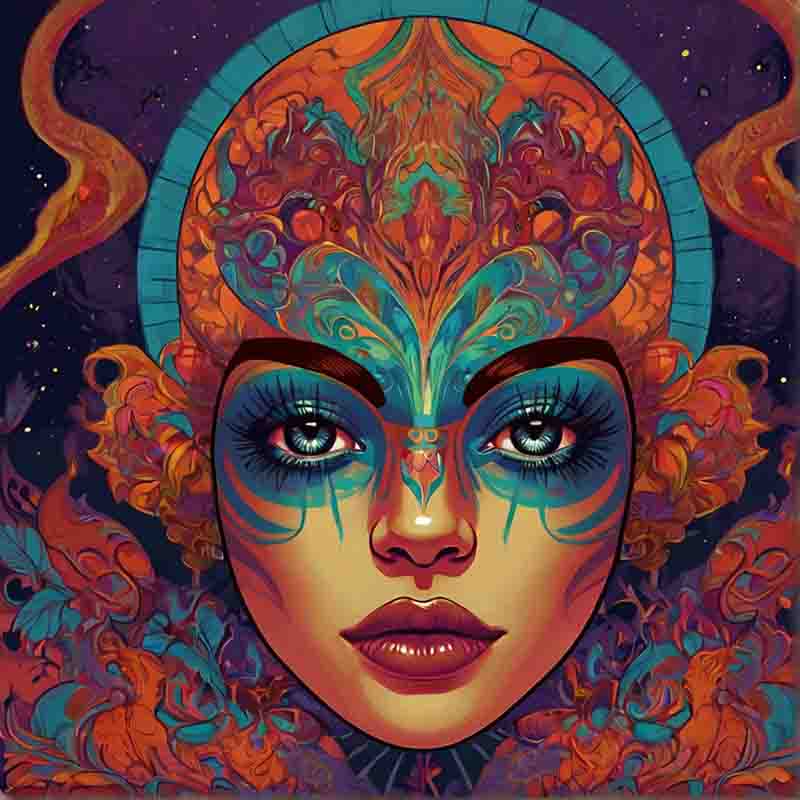
The association of psychedelic rock with altered states of consciousness, mysticism and surrealism resonates with the themes and visual styles of many experimental films, making it a natural choice for filmmakers looking to explore the margins of perception and reality.
In addition to its captivating music, Psychedelic Rock was characterized by a mesmerizing visual aesthetic that played a crucial role in shaping the genre's identity and impact on popular culture.
The visual elements of Psychedelic Rock encompassed album artwork, concert visuals, light shows, and a broader influence on visual arts and fashion.
Together, these aspects created an immersive and multisensory experience for audiences, enhancing the genre's mind-expanding nature.
Psychedelic album artwork and posters
One of the most recognizable aspects of Psychedelic Rock was its vibrant and surreal album artwork.
Artists and designers sought to visually convey the psychedelic experience and the themes explored in the music.
Psychedelic album covers often featured intricate and colorful illustrations, trippy patterns, and surreal imagery that complemented the music's dreamlike qualities.
Prominent artists like Wes Wilson, Victor Moscoso, and Stanley Mouse created iconic posters and album covers for bands like The Grateful Dead, Jefferson Airplane, and Jimi Hendrix, becoming synonymous with the visual language of the era.
Light shows and multimedia performances
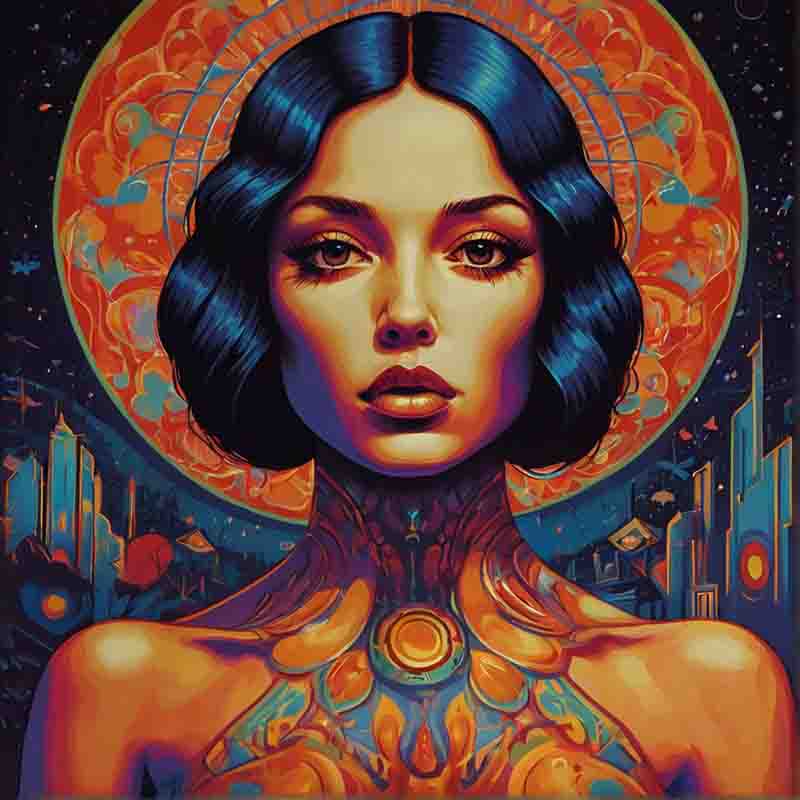
Psychedelic Rock celebrated alternative lifestyles and values, advocating for peace, love, and personal freedom.
Live concerts of Psychedelic Rock bands were immersive experiences that went beyond mere musical performances.
Light shows and multimedia displays became an integral part of the Psychedelic Rock experience, enhancing the audience's sensory journey.
Complex and synchronized light projections, often created with overhead projectors, added an ethereal and kaleidoscopic dimension to the music.
These visuals danced and morphed in sync with the music, transforming the concert space into a mesmerizing psychedelic wonderland.
The light shows became an art form in their own right, elevating the live performances to extraordinary and transcendent experiences
Influence on visual arts and fashion
The Psychedelic Rock movement had a profound impact on visual arts and fashion during the 1960s.
The swirling and psychedelic patterns seen in album covers and concert visuals influenced various art forms, such as posters, paintings, and even fashion design.
Psychedelic art embraced bold colors, distorted perspectives, and intricate patterns, often reflecting the interplay of consciousness and imagination.
The artistic freedom and rebellion of Psychedelic Rock permeated fashion trends, leading to the popularity of vivid tie-dye clothing, flowy garments, and psychedelic prints.
Psychedelic Rock and the evolution of visual effects
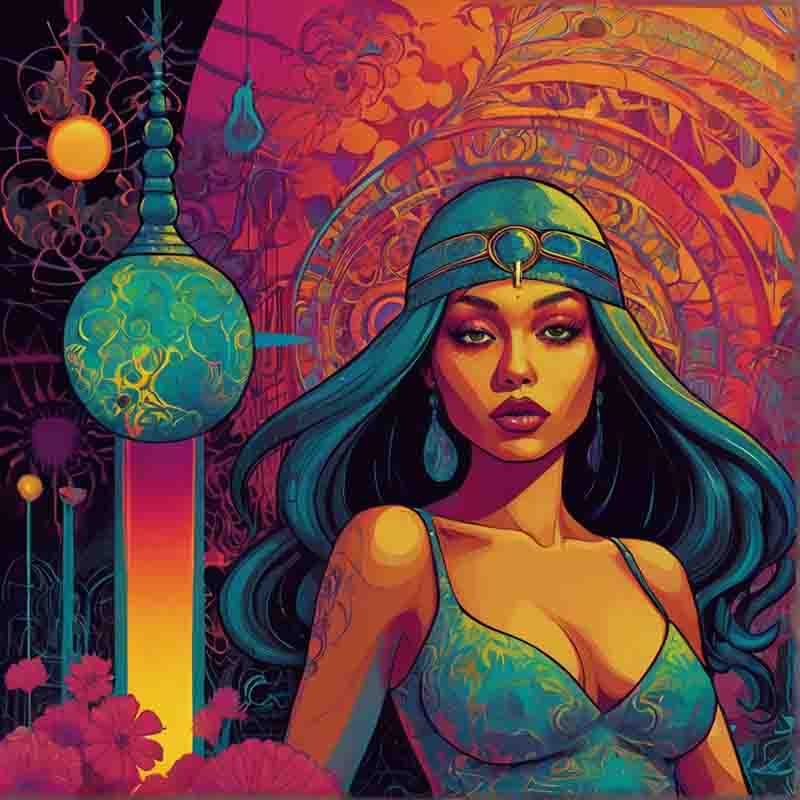
Artists and fans alike embraced bold and unconventional fashion choices, mixing and matching patterns, textures, and accessories to create eye-catching and unique looks.
The era of Psychedelic Rock was a time of significant technological advancements in visual effects.
Artists and filmmakers explored experimental filmmaking techniques, incorporating optical illusions, strobing effects, and animated visuals into their works.
Psychedelic Rock bands, in collaboration with filmmakers, produced innovative music videos and psychedelic short films that complemented their music and visual aesthetic.
Revival of vintage sounds
In recent years, there has been a resurgence of interest in vintage sound and production techniques that were prominent during the Psychedelic Rock era.
Modern musicians and producers often draw inspiration from the analog warmth and organic textures of vintage recording equipment, tape machines, and analog synthesizers.
This revival has contributed to a renewed appreciation for the raw and authentic sound of Psychedelic Rock recordings, reflecting a desire to capture the organic and human elements of music production.
Blending Psychedelic Rock with other genres
Contemporary musicians frequently incorporate elements of Psychedelic Rock into various musical genres, resulting in a fusion of sounds that defies traditional categorization.
Psychedelic elements can be found in indie rock, alternative, electronic, and even hip-hop and R&B.
The genre's experimental nature encourages artists to push the boundaries of their respective genres, creating a rich tapestry of hybrid styles that embrace both the past and the future.
Psychedelic Rock festivals and events
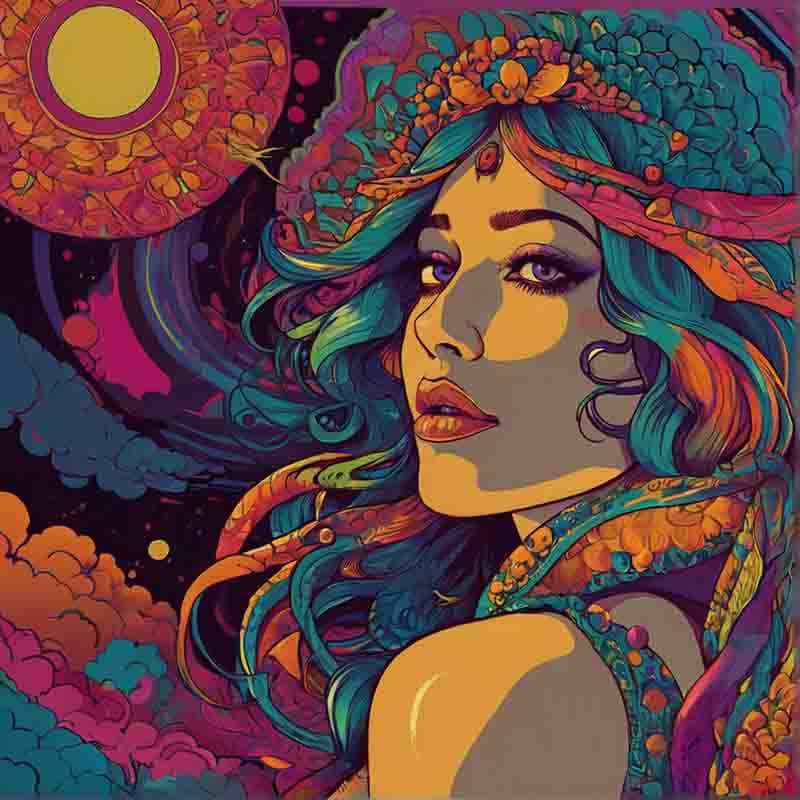
Psychedelic Rock concerts and festivals became spaces for experimentation, self-discovery, and communal celebration, where like-minded individuals could come together to explore new ideas and ways of being.
The enduring popularity of Psychedelic Rock has led to the establishment of dedicated music festivals and events celebrating the genre's legacy.
These gatherings bring together modern-day Psychedelic Rock bands, as well as artists from related genres, fostering a sense of community and artistic exploration.
Psychedelic Rock festivals provide a platform for new and established artists to showcase their music, contributing to the genre's ongoing evolution.
Woodstock and its legacy
One of the most iconic events in the history of Psychedelic Rock is the Woodstock Music & Art Fair held in August 1969.
Billed as "An Aquarian Exposition," Woodstock became a symbol of the countercultural movement, drawing hundreds of thousands of people to a farm in Bethel, New York.
The festival featured some of the most influential Psychedelic Rock acts of the time, including Jimi Hendrix, The Who, Janis Joplin, and Jefferson Airplane.
Woodstock's legacy extends far beyond the music. It became a symbol of peace, love, and unity, embodying the spirit of the 1960s counterculture.
The event demonstrated the potential of music to bring together diverse groups of people in a shared celebration of art and humanity.
Woodstock's impact on music festivals and the broader cultural landscape remains palpable, inspiring the creation of numerous large-scale music gatherings around the world.
Modern-day Psychedelic Rock festivals
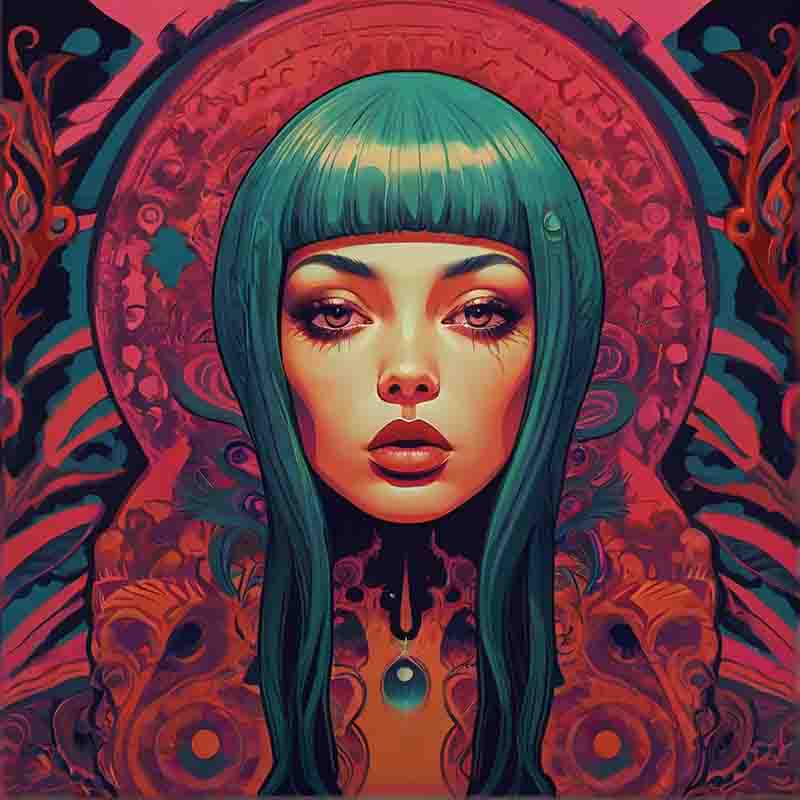
Symbolism such as doors, windows and labyrinths are used to represent the threshold between mundane reality and higher consciousness, inviting listeners to engage in a quest of spiritual awakening and self-discovery.
In the modern era, Psychedelic Rock festivals have continued to thrive, carrying on the legacy of their predecessors.
These events attract music enthusiasts seeking an immersive and mind-expanding experience.
Often set in scenic outdoor locations or unique venues, these festivals create a vibrant and inclusive atmosphere, encouraging attendees to embrace creativity, self-expression, and unity.
Fostering a sense of community and togetherness
Psychedelic Rock festivals have always been more than just music events; they are communal gatherings that bring people from different backgrounds together.
The sense of community at these festivals is palpable, as attendees share a collective experience of music, art, and free-spiritedness.
The atmosphere is often characterized by a spirit of openness, acceptance, and positive energy, creating a temporary oasis where attendees can escape the stresses of daily life and connect with like-minded individuals.
Impact on the music industry
Psychedelic Rock festivals and events have had a significant impact on the music industry by serving as launching pads for both established and emerging artists.
These gatherings provide a unique opportunity for musicians to connect directly with their audience, build a fan base, and gain exposure in a live setting.
Additionally, the festivals' emphasis on creativity and artistic expression has influenced the broader music scene, encouraging artists across genres to embrace experimentation and innovative approaches to music-making.
From its early pioneers like The Beatles and Jefferson Airplane to the innovative soundscapes of Pink Floyd and The Doors, Psychedelic Rock's impact has been far-reaching.
Its experimental nature, mind-expanding lyrics, and fusion of diverse musical influences paved the way for a revolution in music production and artistic expression.
Psychedelic Rock: FAQ
Are you curious about music, art, technology, fashion, lifestyle, and beer?
If so, then you need to subscribe to the free Likewolf newsletter.
100% privacy. When you sign up, we'll keep you posted.
Complex Compositions
What Rock Music Could Be
